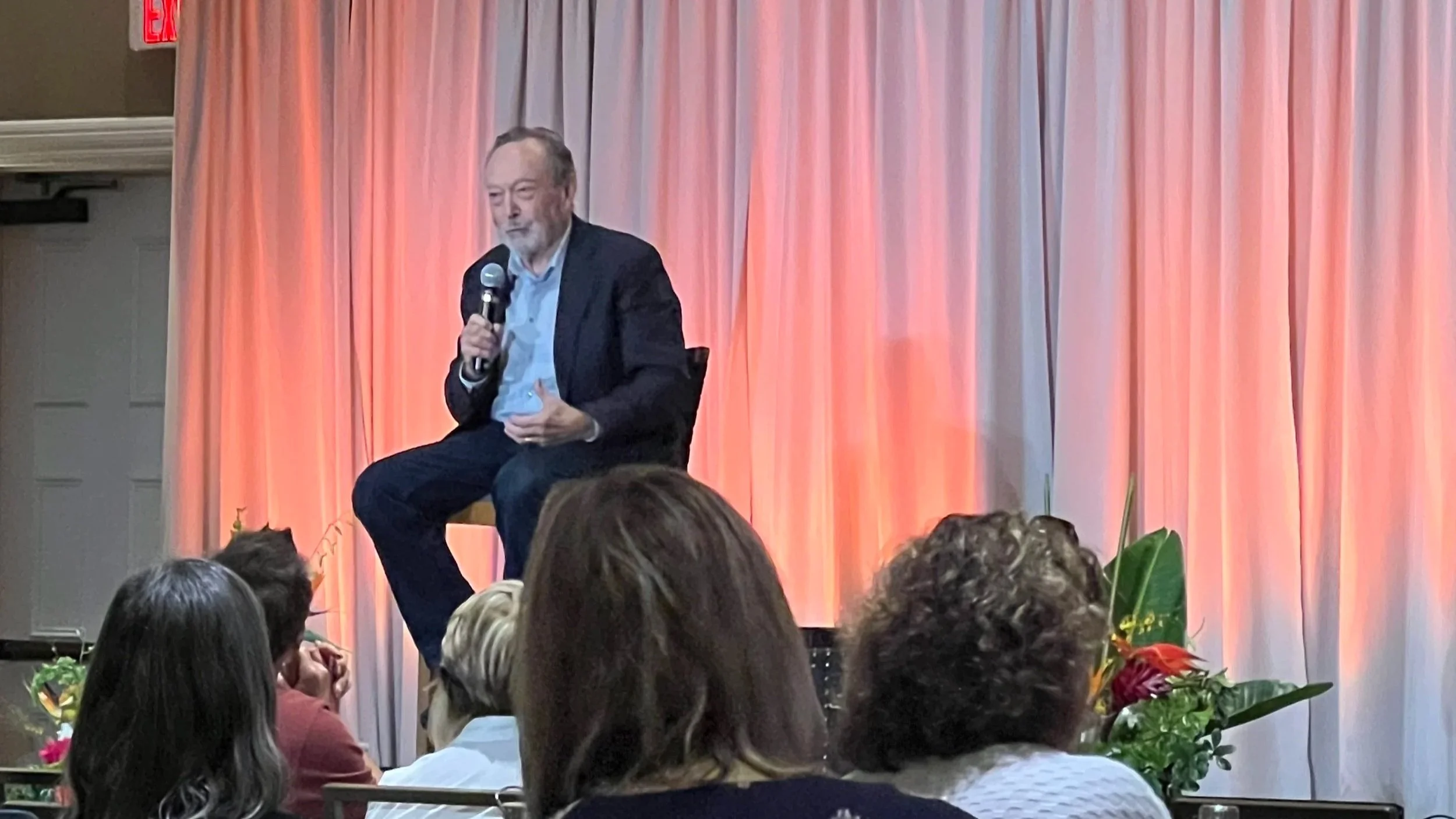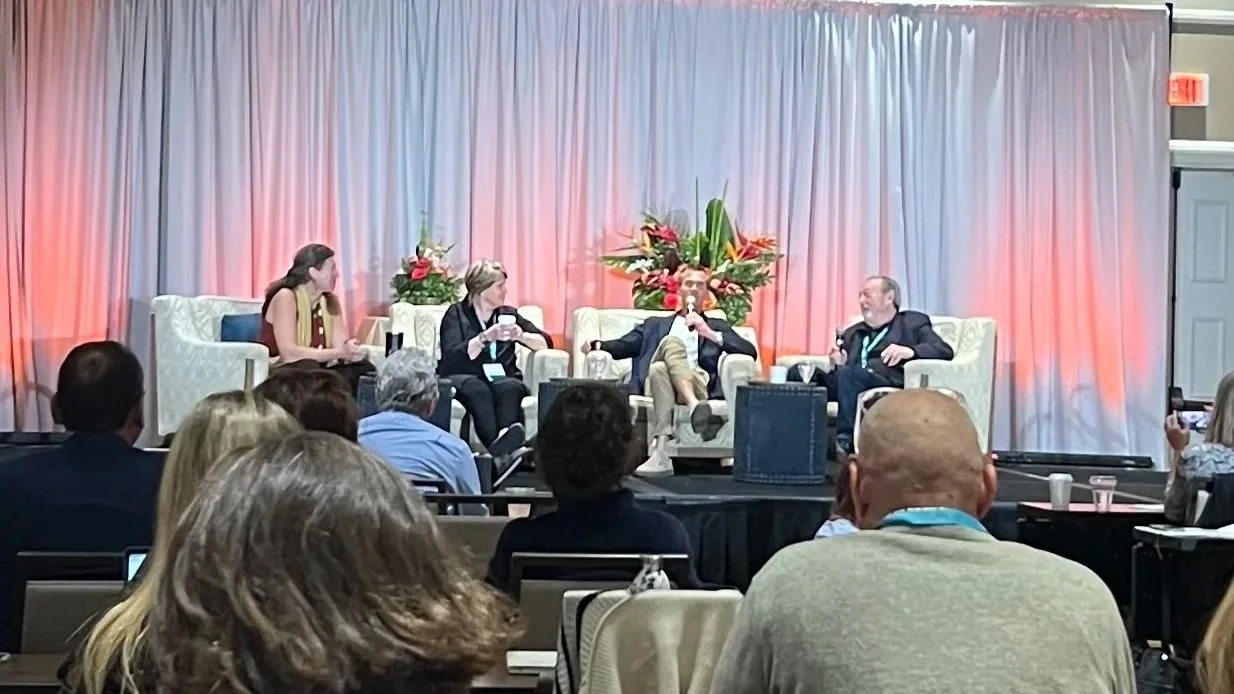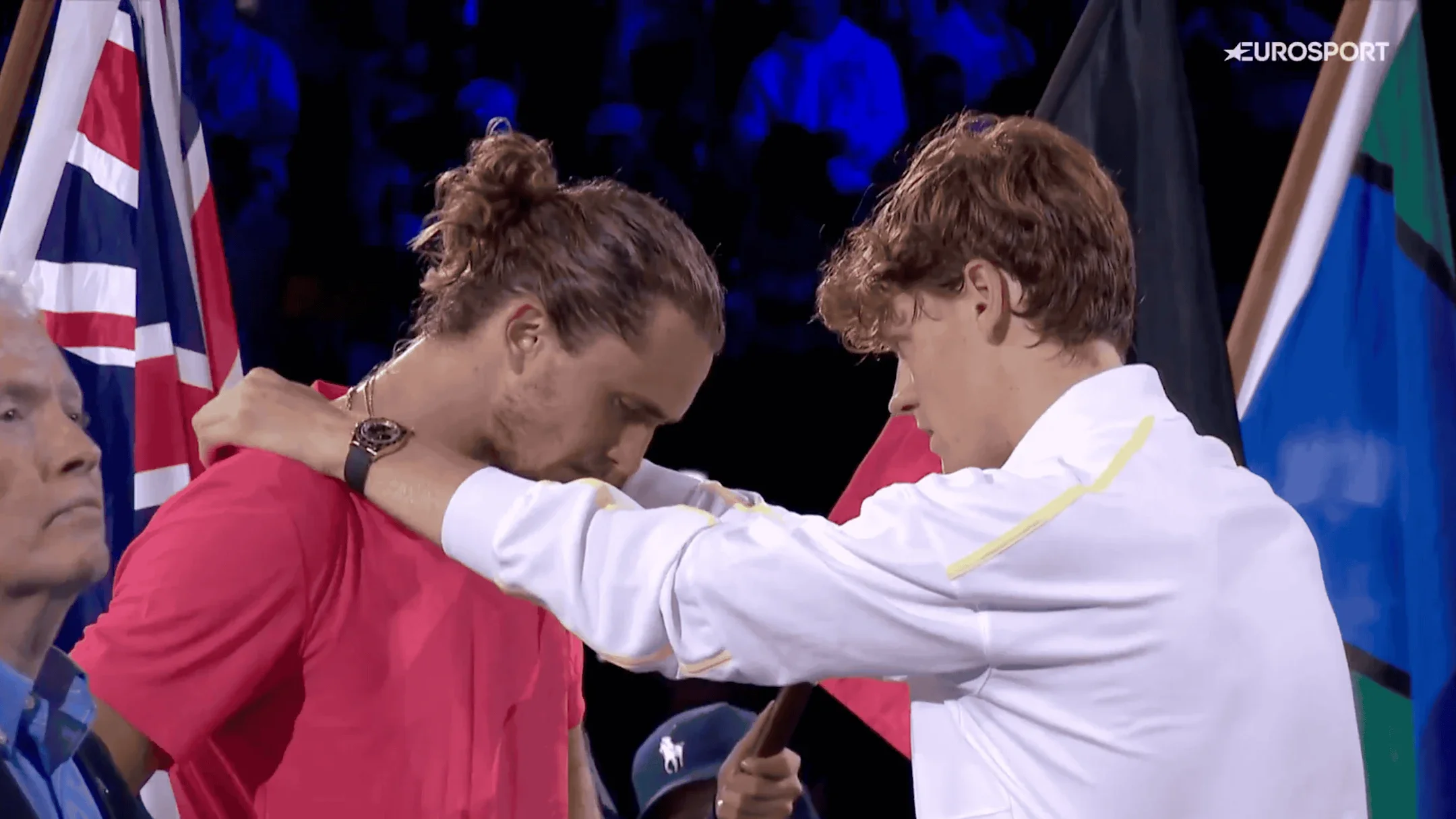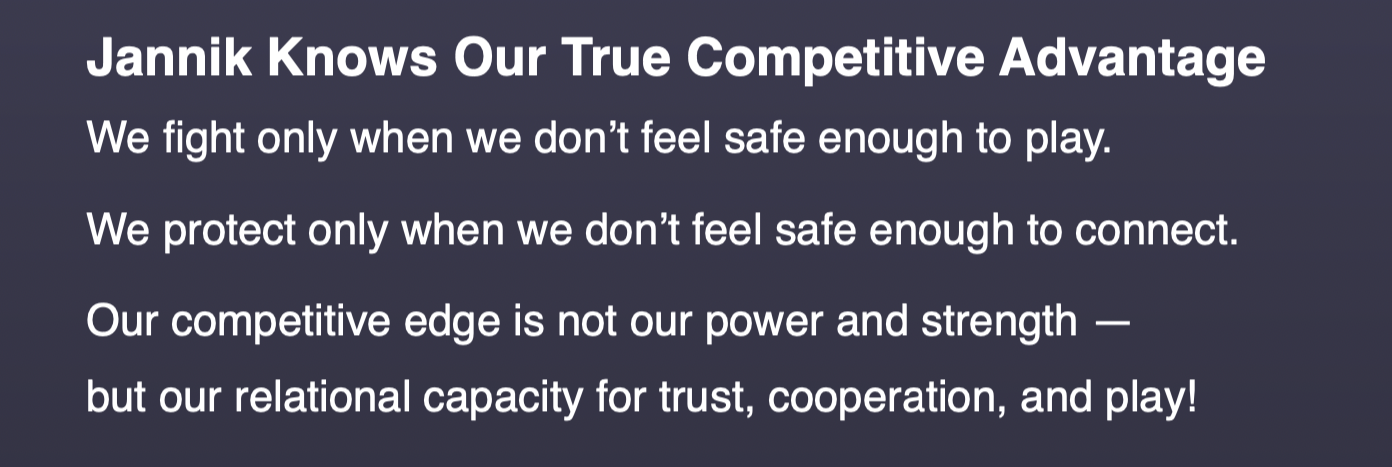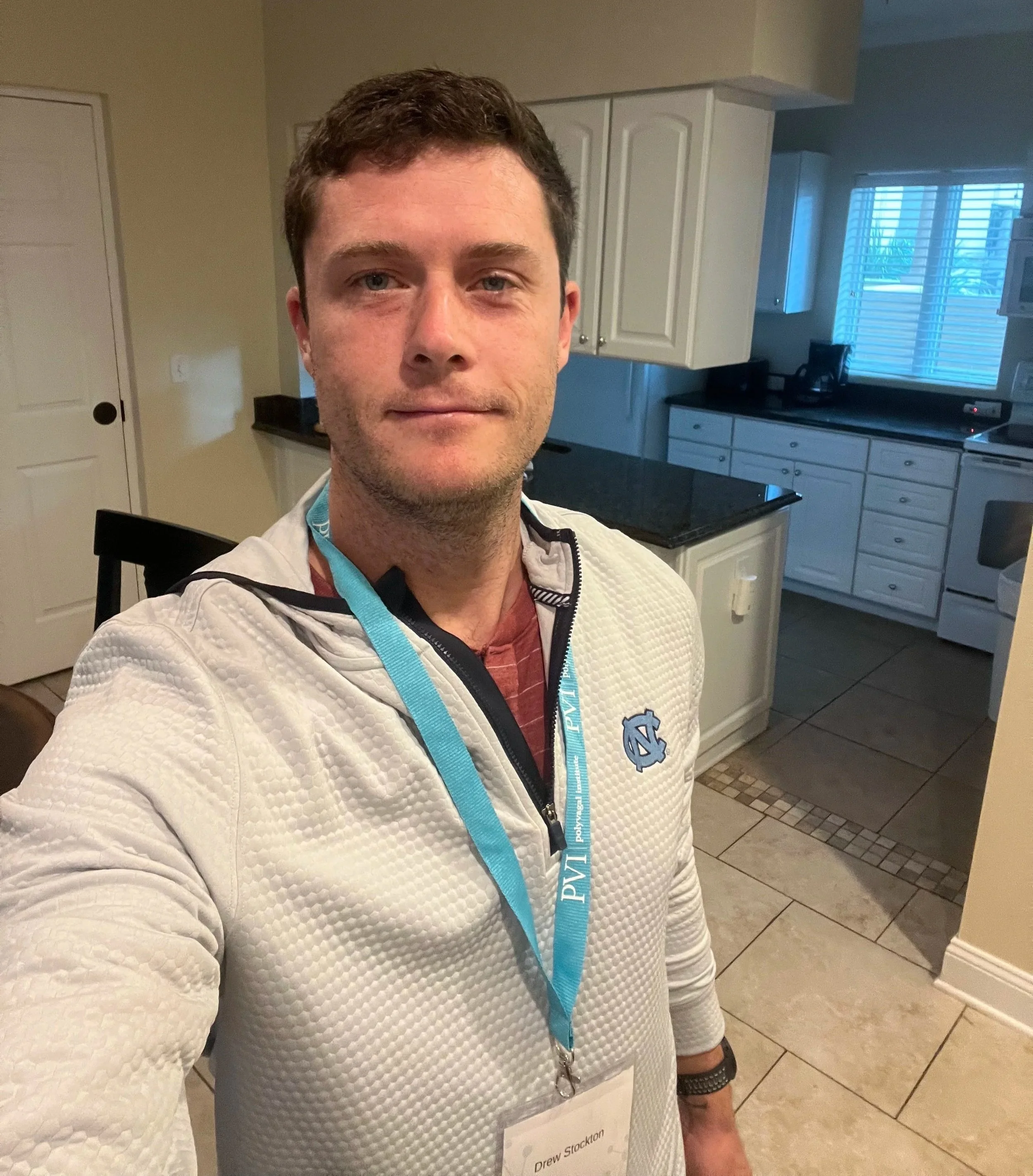Top 7 Takeaways from The 2025 International Polyvagal Gathering
A Nervous System Superconference
Leaving Spain for the U.S. for anything other than precious family is rare. A quick work trip is unprecedented.
Which shows just how much this conference meant to me: The International Polyvagal Gathering (‘25 in Amelia Island, FL) brings together clinicians, researchers and top experts from the Polyvagal Theory world sharing cutting-edge discussions, practical applications and new insights.
The Polyvagal Theory (PVT) is a neuroscientific and evolutionary model developed by Stephen Porges that explains how the vagus nerve and the autonomic nervous system influence our social behavior, emotions, and fear responses.
PVT is the foundation of my Nervous System work, and as I continue to emphasize this specialization in my professional practice, I’ve felt extra inspired to connect with others using PVT and getting myself in the room with those leading the way.
The weekend did not disappoint with days full of insight-rich presentations and opportunities to network. While most presentations included unsettling statistics related to how stress and dysregulated nervous systems are negatively impacting individuals and our society (plenty of examples below), they always end hopeful. Because that’s what the Polyvagal Theory provides: hope and a path forward.
PVT uses an easy to understand language and framework with practical applications so we can all take empowered action and immediately start benefitting. It gives us a story that explains the root of our thoughts, actions, and behaviors while making clear how we can become more active operators to align them in our desired direction.
I’ve been excited to share my reflection from this superconference because I took away some invaluable insights and fresh perspectives that have served me and no doubt will provide value to others who are interested in nervous system health / overall wellbeing. An important part of my work is to act as a middle man between the scientific jargon and the common person, which is what I attempt to do in this piece: the need to knows in a digestible way for all.
Top 7 Takeaways:
There is a Kid’s Resiliency Crisis
Nervous system experts are emphasizing the Microbiome
There is exciting new Tech available and in production for Nervous System Regulation
Happiness from fulfillment (Eudaonic) is better for our health than happiness from seeking pleasure (Hedonic).
Power of Play - play is one of the most impactful things for nervous system flexibility and resilience.
“Safe Enough” - It’s not all or nothing.
It all comes back to Connection - “None of life is an Individual performance”
There is a Kid’s resiliency crisis, but there are many ways to create the conditions for their success
Two particularly impactful presentations were from children’s experts Dr. Elisa Song MD, one of the foremost pioneers and trusted experts in pediatric integrative and functional medicine, and Dr. Niki Elliott, PhD, a clinical professor of neurodiversity and embodied equity at the University of San Diego. They presented the unsettling numbers below that describe this “kid’s resiliency crisis,” as well as how we can contribute to a shifting narrative.
These numbers are disturbing, but PVT is a hopeful framework and the good news is that we have humans like Dr. Song and Dr. Elliott who are dedicating their work and lives towards positive change. I work with adults, but many of my clients have kids and parenting is often a top challenge and priority. (And at the end of the day, we adults are just kids with adult bodies and these considerations remain relevant to us).
The presentations were unique: i) Dr. Song focusing on the Gut-Brain connection and her framework on how to create real results, and ii) Dr. Elliott’s focus on “neurodiverse” children and how to create the most supportive learning environments for all young learners.
So what are they recommending we do? Here are their concepts at a very high level and I would highly encourage all to explore their work in more depth.
How does Dr. Song do it?
Her system is to i) Educate, ii) Empower and iiI) Have Fun.
Teach them the WHY (make it relevant to them)
Teach them the HOW
I particularly love the “empower” principle and hearing how she witnesses kids take more ownership of their actions when they understand the why. I also appreciated how she emphasized the importance of letting children choose where they start, which as we learn can be a variety of different places (pillars below).
Her top pillars:
Nourish - the microbiome through food/drink
Breathe - access the vagus nerve to optimize brain/gut connection
Move - daily movement
Hydrate
Sleep
A simple template of relevant questions she shared included:
“Have you ever wished you could …. “
… make your tummy aches go away?
… have more energy to hang out with your friends?
… fall asleep faster?
Although I haven’t read her National Bestseller book, Healthy Kids, Happy Kids (link to amazon), I’ve been recommending it to my clients and those close to me with kids because of how inspired I was with her presentation which covered topics she expands on in the book.
More on Dr. Song’s work at her website.
How does Dr. Elliott do it?
Dr. Elliott uses the Embodied Inclusion (EI) 360 Framework for applying to children’s learning environments which takes into account five specific domains.
The five domains (in her words):
Physiological - Traditional systems ignore the body’s needs, but PVT and EI remind us inclusion starts with nervous system regulation.
Relational - Reclaims connection as medicine.
Environmental - Nature, light, sound, and texture become partners in learning rather than neutral backdrops.
Instructional - Addresses the gaps created by fragmented systems, where inconsistent syllabi, lecture-heavy instruction, and unclear expectations overload students’ executive functioning.
Transcendental - Helps us see education and human development as a sacred act, opportunities to reconnect learners with their inner genius, intuition, creativity, out- of- the- box thinking and collective purpose.
Dr. Elliott started her presentation by reframing “neurodivergent” to “neurodiverse”, destigmatizing these learning challenges. Neurodivergent infers these learners are diverging from what is normal or expected, labeling them as flawed and contributing to self-limiting beliefs that can last a lifetime, versus neurodiverse which embraces and celebrates their uniqueness. It was one of those quotes that hit me, and the whole room, deeply.
It was clear in listening to Dr. Elliott that for maximizing children’s learning capacity, it is critical to understand the nervous system beneath the child’s behavior, and to do everything we can to help that nervous system find connection and safety. Every child and nervous system is it’s own unique little world with many unique domains and considerations to be taken into account!
More on Dr. Elliott’s work at her website.
2. Nervous system experts are emphasizing the Microbiome’s key role in all areas of wellness
Our gut microbiome is our largest interface with our external world.
- Dr. Elisa Song
I was somewhat surprised at how much the microbiome came up during the weekend, reminding me of how interdependent the nervous system and gut are.
Our microbiome consists of trillions of microbes that shape metabolism (digestion), immune system and hormones (mood), among many other health outcomes. There is two-way communication between our nervous system and our microbiome: stress impacts the microbes and the microbes also communicate safety or threat back to the nervous system.
A healthy and balanced microbiome sends anti-inflammatory, calming signals of safety to the brain while an imbalanced microbiome sends pro-inflammatory signals of threat to the brain. Chronic stress or unsafe states disrupt microbial balance further distorting the threat signals back to the nervous system.
Here’s the key takeaway for me: the more we understand the microbiome, the clearer it is how significant a role it plays in our overall health, yet it’s through understanding the feedback loop between our microbiome and nervous system that reveals how we can impact the microbiome apart from just what we eat/drink.
Some data*:
Happiness/positive emotions and high Heart Rate Variability (HRV) associated with higher gut microbiome diversity in children
High stress and low HRV associated with lower microbiome diversity in children
(*https://pubmed.ncbi.nlm.nih.gov/31112792/)
Brain / Gut connection.
(image courtesy of Dr. Song)
3. There is new and exciting Tech available and in production to support clients and therapists regulate the nervous system
It was cool to see how Polyvagal-informed teams are using their knowledge and skills to create tech designed to help clients and practitioners regulate the nervous system and increase wellbeing. There are certainly less meaningful tech projects…
Example 1:
I saw a demo of a camera that is designed for both clients and therapists to detect blood flow in the face and provide real time feedback about what nervous system state the person is in. This would help the therapist identify where their client is physiologically (which doesn’t always match their verbal stories) and it could also support clients increase bodily awareness and their ability to feel and then name their state.
Example 2:
One of the big presentations by the founder of PVT (our Michael Jordan), Dr. Stephen Porges, was on his new Sonic Augmentation Technology, an auditory listening therapy that uses specially filtered music to help regulate the nervous system, reduce stress, and improve emotional and social engagement. Sonocea® taps into how our nervous system processes sound, shifting us from a defensive state to a regulated, balanced state.
The intentions of this new tech are positive ones, yet I remain old school and a bit skeptical about us humans becoming overly dependent on it. I'm not skeptical of the tech itself, particularly of Dr. Porges’ audio technology. I see the potential to help a lot of people regulate their nervous system, especially those who lack tools and resilience. It’s a tool in the toolkit, and I just hope we remember to see it that way: one of many potential tools, and how our tools which are not tech-dependent will continue to be indispensable!
4 . Happiness from meaning and fulfillment (Eudaonic) is better for our health than short term happiness from seeking pleasure and avoiding pain (Hedonic).
Maybe these are new words for you also: Eudaonic and Hedonic Happiness, although they’re concepts we all understand and ones that came up in various presentations over the weekend. It was a most pleasant surprise to hear these researchers and their quant-heavy minds bringing in purpose and fulfillment!
Here is how Dr. Elisa Song defined the two:
Hedonism = happiness in the pursuit of more pleasure and less pain
Eudaimonism = happiness, or “human flourishing,” in the pursuit of one’s highest potential to live a truly fulfilling and meaningful life
I chuckled to myself as I listened to Dr. Steve Cole, a highly renowned researcher, professor and genome expert, explain the science behind how Eudaonic Happiness more favorably impacts our gene expression, immune system and likelihood of chronic disease in comparison to Hedonic Happiness.
Too good! Part of me was like, “duh!”, loving what had been intuitively clear to me for years being supported by strong scientific data! I didn’t need this research to arrive at this conclusion, but I know our society is an evidence-based one, and maybe it’s the difference maker for someone out there contemplating where purpose fits in.
Some of the data supporting Eudaonic Happiness:
Decreased physiologic stress response, decreased inflammation, improved ability to fight viral infections
(https://www.pnas.org/doi/full/10.1073/pnas.1305419110)
Improved Heart Rate Variability (HRV)
(https://pubmed.ncbi.nlm.nih.gov/40521657/)
5. Power of Play - play is one of the most impactful things we can do for nervous system flexibility and resilience.
One of those simple, yet necessary reminders. We adults overcomplicate things and take ourselves so seriously, but as previously mentioned, we’re just kids in adult bodies and also highly benefit from incorporating play into life.
Play is so powerful because it combines sympathetic mobilized energy with safety and connection. It’s when we blend the mobilized state of the nervous system (sympathetic) with safety and connection that we gain access to excitement and play, which are very different from the sympathetic defense responses of fight (anger) / flight (anxiety). Play is how we befriend our sympathetic nervous system which increases our tolerance for stress.
When asked what her favorite tool/practice was for regulating the nervous system, Dr. Arielle Schwartz, a leading voice in the Polyvagal Informed Therapy and Yoga space, started her answer by mentioning a breathwork and a somatic touch practice. Then, in what was an awesome moment, she had clarity and firmly declared, “you know what my absolute favorite tool is… laughter.”
Dr. Schwartz is one of the most highly educated and sought-after nervous system experts in the world, a PhD licensed clinical therapist and yoga teacher who has a unique perspective on how to apply PVT. She undoubtedly has more tools/practices than the vast majority of humans on this planet, which was why her response was so meaningful.
What does play look like for adults? (don’t overcomplicate it, but here are some examples): sport, dancing, singing, laughing. Activities that include mobilization + connection/safety.
Below are two great play-related quotes from Dr. Porges over the weekend:
Dr. Stephen Porges (our Michael Jordan)
“Play and Dance Therapists know a lot.”
A simple quote, but coming from Dr. Porges it carries a lot of weight. As one of the most sophisticated and intelligent minds in this space, Dr. Porges is emphasizing the incredibly high value of play and dance, and how professionals specializing in these fields have so much to contribute. To me, he is validating what is underappreciated and undervalued work/service in our society.
“We can play our way into safety”
Play can pull us out of defense states and back to safety. The image that comes to my mind is that of making a friend laugh who was feeling down. Cheering them up. When I dance like a fool in front of a friend who was feeling frustrated (fight energy) and she is able to see me and laugh, we witness the shift from defense to connection and safety.
Which highlights another thing I love about PVT - this framework is an intuitive one that many of us are already doing without cognitively understanding the why. PVT gives us the language and framework to understand human behavior and to then use that understanding to take more intentional and skillful actions aligned with our values and highest selves. It positively impacts our inner world as well as all the people we engage with in our external world. Serving ourselves is servings others - win/win!
6. “Safe Enough” - Safety is not all or nothing.
As you have already seen in this piece, we talk a lot about safety in the nervous system world. The concept of “safe enough” was repeated throughout the weekend, emphasizing safety isn’t all or nothing. The key being to maintain access to enough safety in order to avoid being shifted into a defense response (fight, flight, shutdown), which occurs when threat starts to outweigh safety.
“Enough safety” means that Ventral Vagal circuits are still on, the home of safety and connection, and it’s by maintaining access to ventral and “enough” safety that allows for the ability to feel excitement and play (mobilization + safety) without being shifted into a defense response (fight/flight - mobilization + danger).
“When we can feel safe enough to be who we are, we see the brilliance of humans coming out because they’re not using their resources to defend.” - Dr. Stephen Porges
This was another one of those quotes that hit the group hard. A feeling of: YES, this is what it’s all about! Dr. Porges is referring to what happens when we live in chronic defense states of (fight, flight or shutdown): we spend valuable resources on defense, which is metabolically taxing on our system. But when we learn how to shift out of defense, resources and energy become available to be spent elsewhere (like creativity, innovation and spontaneity).
The Polyvagal Heavy Hitters. I got to meet Dr. Schwartz (far left) and Michael Allison (second from right) personally, whose teachings and styles have impacted me the most in how I understand PVT and share on it. A bit of a star-struck moment for me!
7. It all comes back to Connection - “None of life is an Individual performance”
Of all the meaningful moments from the weekend, the most impactful for me was Michael Allison concluding his presentation by showing a video of the world #1 ranked tennis player, Jannik Sinner, consoling an emotional Alexander Zverev after the 2025 French Open finals. A sincere moment of deep empathy from the champion Sinner, who has been on both sides of finals matches.
Sinner is a kid of just 24 years old, but is wise well beyond his years. He seems to recall the bigger picture and humanness of it all, even when competing at the highest level of professional sports. That competing doesn’t have to symbolize a fight between enemies and that one’s performance doesn’t define them as a human being. While the nervous system can perceive losing as a huge threat (to identity / ego / existence), Sinner was compassionately reaching out to help Zverev feel connection and safety in what was clearly an overwhelmingly vulnerable moment.
Sinner was reminding him that at the end of the day, as humans, they are on the same team.
Here was one of Michael’s final slides on how he sees in Jannik Sinner through his polyvagal playzone lens:
Michael’s polyvagal-informed playzone framework, which I’ve had the privilege of training in, reframes how we look at competition and optimal performance. He shows us that it’s not about dominating an “opponent/enemy”, but instead about playing with an ally that brings out the best in both. As we watched the video of Sinner and Zrevev, I felt my eyes swelling up as I connected with the depth of the message. It’s a drastic change of perspective from everything we were taught about competition and the need to prove ourselves / our worth to the world.
Final Thoughts
Understanding the Polyvagal Theory has changed the way I walk through life. It has changed the way I view my own thoughts, actions, behaviors and those of other humans around me. I’ve learned to see myself through a more self-compassionate lens which results in less judgment and self-criticism. And with less self-judgement and criticism comes less judgement and criticism of others, replaced instead by more compassion and empathy. Big positives in my humble, yet now biased opinion!
At the end of the day, The Polyvagal Theory, like our friend Jannik Sinner, reminds us that as humans, we’re all on the same team, and a rising tide lifts all boats.
Imagine if we measured success by the amount of safety that people felt in our presence.
- Jonathan Louis Dent
Selfie action from my airbnb on Amelia Island showing off my PVI (Polyvagal Institute)-credentialed name tag and some proof to you readers that I was indeed in attendance!
As I was putting this reflection together, I realized that I need to do a better job of taking pictures at future content-rich experiences like this one to support the reflection and content-creation process! Noted.
All questions/comments are welcome. Thanks for reading along.
To MÁS nervous system resilience!
Drew






